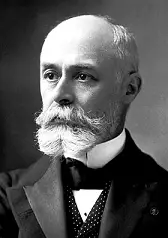Discovery of Gamma Rays

Gamma rays were discovered shortly after the discovery of X-rays. In 1896, French scientist Henri Becquerel discovered that uranium minerals could expose a photographic plate through another material. Becquerel presumed that uranium emitted some invisible light similar to X-rays, which W.C.Roentgen recently discovered. He called it “metallic phosphorescence”. Henri Becquerel had found gamma radiation being emitted by radioisotope 226Ra (radium), which is part of the Uranium-series of uranium decay chain. Gamma rays were first thought to be particles with mass, for example, extremely energetic beta particles. This opinion failed because a magnetic field cannot deflect this radiation, which indicated they had no charge. In 1914, gamma rays were observed to be reflected from crystal surfaces, proving they must be electromagnetic radiation with higher energy (higher frequency and shorter wavelengths).